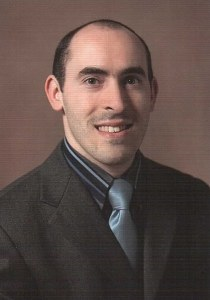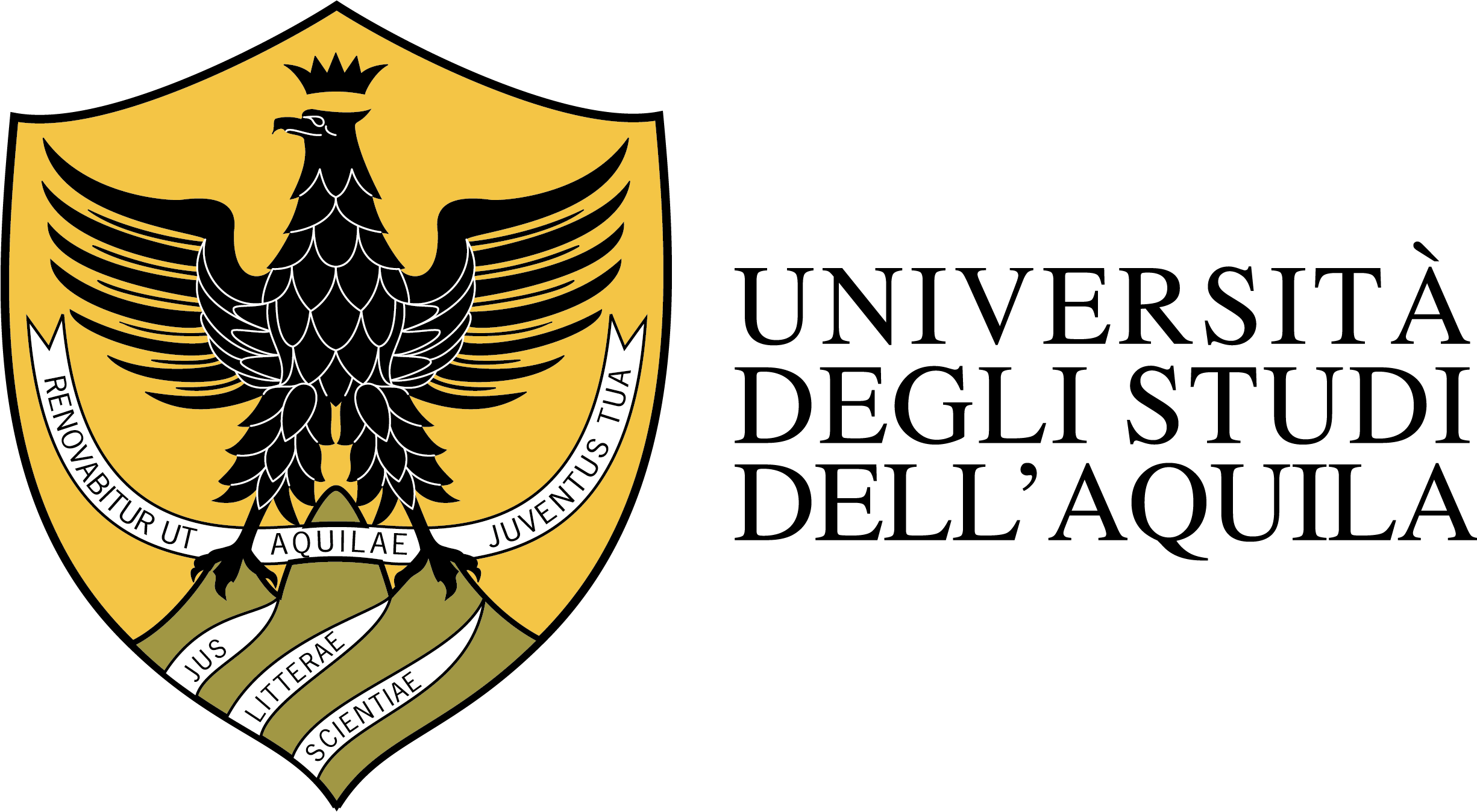Andrea De Marcellis
 |
Nome: Andrea
Cognome: De Marcellis Qualifica: Professore associato Settore Scientifico Disciplinare: ING-INF/01 (Elettronica) Struttura di afferenza: Dipartimento di Ingegneria industriale e dell'informazione e di economia Email: andrea.demarcellis Telefono Ufficio: +39 0862434480 Altro telefono: +39 3403063460 |
| Insegnamento | Orario di ricevimento |
|---|
Curriculum scientifico
(Aggiornato il 03-10-2018) versione stampabile (pdf)
versione stampabile (pdf) Dr. Andrea De Marcellis received the degree in Electronic Engineering defending the thesis “Design and characterization of integrated active filters with high quality factor” and the PhD in Microelectronics with a final dissertation on “Low-Voltage Low-Power microelectronic circuits for Voltage-Mode and Current-Mode analog sensor interfaces” both from University of L’Aquila (Italy) in 2005 and 2009, respectively.
From April 2009, he has obtained 5 Research Fellowship working on different research programs.
He achieved the National Scientific Habilitation (ASN, Italy) as Associate Professor in Electronics (CUN: 09/E3; SSD: ING-INF/01 – Electronics) from January 2015.
He is co-author of a book, a book-chapter and more than 140 publications in international journals and conference proceedings with 818 citations and H-Index equal to 17. He is presenting author of more than 40 conference papers and co-inventor of a patent on an automatic lock-in amplifier.
His major scientific accomplishments and relevant achievements are summarised in the following:
1) Fellowship Sub-Program “Attracting Talent”, VLC-CAMPUS 2013, International Campus of Excellence, Superior Technical School of Engineering (STSE), University of Valencia (Spain), Dept. of Electronic Engineering (03/2013).
2) Development of an innovative fully-analogue automatic lock-in amplifier, integrated in standard CMOS technology, with autocalibrating and auto-tuning properties that allow to overcome the limits of commercial and in the literature solutions mainly related to the phase alignment and frequency tuning (i.e., the calibration) of the system, which is typically manual. The designed solution, that has been patented (“Analog System for the Detection of Signals Buried Into Noise Through Lock-In Amplifier with Automatic and Continuous Calibration”, N°. RM2008-A000194, April 2008), provides sensitivity and resolution improvements as well as the SNR enhancement so allowing the detection/measurement of very small signals and/or buried into noise (SNR<<1) with a high accuracy also with respect of any tolerances and/or drifts of the electronic components (e.g., aging, changes of the operating temperature and/or the supply voltage). Moreover, a technical report/paper entitled “Fully-analog lock-in amplifier with automatic phase and frequency tuning” (A. De Marcellis, G. Ferri, A. D’Amico) related to this activity has been selected and published as example of ASIC project in CMOS AustriaMicroSystems (AMS) 0.35μm in the Annual Activity Report 2012, Europractice IC Services (http://www.europractice-ic.com/docs/Annual_report_2012.pdf).
3) Design of novel tuneable basic Current Conveyors for impedance simulation (e.g., capacitance multipliers and inductance simulators) in integrated circuits where sizes, tuneability and integration of high valued capacitors/inductors are very important. They present low-voltage and low-power characteristics and the capabilities to be tuned by external voltage control signals resulting particularly suitable for signal conditioning and signal processing in portable applications.
4) Development of a new detection technique based on the phase shift measurement between two signals operating synchronous demodulation procedures. In this regards, an innovative autocalibrating phase-voltage converter has been designed for high-sensitivity and high-resolution detection of the phase shifts. Moreover, the implemented overall optoelectronic system employs a Silicon photodiode as light sensing device so exploiting the change of its internal junction capacitance, as a function of the light power impinging on its sensitive area, to provide the phase shift variation to be measured. Through the electrical modulation (i.e., an AC reverse bias voltage) applied to the photodiode that works in photovoltaic regime and using conventional instrumentation, it is possible to detect light power variations down to few picowatt corresponding to changes of the concentration of chemical/biological substances of the order of tens of picomolar.
His research career started in the area of analogue electronics and microelectronics for the interfacing of resistive and capacitive sensors. Involvements in different funded research projects and several scientific collaborations with other research groups have provided an improvement of skills/expertises on the scientific research and on how to tackle research problems. Management skills and capabilities in scientific research, which are indispensable for maturely and independently managing any new research project, have been gained during his research career by working at different levels, issues and kinds of projects, such as:
1) "Actuators and phase detection systems of signals for confocal microscopes with very high spatial resolution";
2) "Development of a high resolution system for the measurement of small concentrations of gas based on the use of a new analog integrated automatic lock-in";
3) "Design, development and characterization of interfacing circuits and systems for signal conditioning of GiantMagnetoResistive (GMR) sensors in specific applications";
4) "Portable system for gas environmental monitoring with intelligent A/D integrated interface for the optimization of sensor resolution and accuracy";
5) "High selectivity gas detection system with modulated temperature regime";
6) "Design and fabrication of a high resolution system for the measurement of small concentrations of gases (methane and ethylene) based on the use of a new analog integrated lock-in, a microsystem black body and a carbon nanotube bolometer";
7) "Identification of organic molecules and biological materials by means of surface plasmon spectroscopy";
8) "Study of optoelectronic and nanophotonic innovative solutions for the optimisation of the energy efficiency in photovoltaic panels".
Moreover, one year spent at the University of Valencia (Spain), working on the development of new integrated electronic interfaces for GiantMagnetoResistive sensors and their complete characterisations, has required significant initiative as regards independence and leadership, successfully mastering changes of working environments as well as fields of research. In addition, he has been also visiting researcher in November 2013 at the Research and Development Institute INESC-MN in Lisbon (Portugal) working on the development and fabrication of integrated GiantMagnetoResistive sensors.
More in detail, his main research activities, fields of interest and expertises concern different aspects summarised as follows:
1) design (in ORCAD PSpice and CADENCE Design System), development and characterisation of analogue CMOS integrated microelectronic circuits and systems for signal conditioning/processing and sensors interfacing implemented both in “Voltage-Mode” (using Operational Amplifiers) and “Current-Mode” (employing Second Generation Current Conveyors) approaches and with low-voltage and low-power characteristics;
2) design, development and characterisation of measurement systems for signal from noise recovery (lock-in amplifiers and phase detectors) implementing innovative automatic synchronous techniques for sensitivity and resolution optimizations (i.e., SNR enhancement) in the detection of electrical and optical signals;
3) development of systems for data acquisition, generation and processing through acquisition boards (DAQs) and by implementing virtual instruments in LABVIEW environment;
4) development of printed circuit board prototypes and design of microelectronic layout of analog integrated circuits and systems for specific applications (ASIC);
5) development of measurement circuits and systems and front-end instrumentations for portable applications;
6) knowledge of laboratory equipments and instrumentations, such as analog and digital oscilloscopes, analog and digital multimeters, spectrum and network analyzers, signal generators, power suppliers, current generators, optical tables/equipments, Pockels cells, acousto-optic crystals, electro-optic crystals, lock-in amplifiers. Experience in a Class 100/10 clean-room with optical and e-beam lithography for micro/nano sensing devices fabrication.
Currently he is working also on optical sensors, development and modelling of nanostructured photonic devices and metamaterials (designed and simulated in COMSOL Multiphysics environment) for sensing applications and surface plasmon spectroscopy (in visible and/or infrared regions) with high-sensitivity detection. The resulting solutions are mainly suitable for the detection of chemical and biological substances with very high resolutions.
In addition, he is also developing transcutaneous biotelemetry systems based on new optical UWB modulation techniques that can be applied also to civil/environmental and industrial scenarios. The developed systems employ sub-nanosecond laser pulses so allowing for high data rate communication whilst achieving a significant power reduction compared to the state-of-the-art. These features make this particularly suitable for emerging biomedical applications such as neural implantable bidirectional communication systems that need to transmit large amounts of data through tissue/skin to achieve high dimensionality, real-time control of complex prosthetic devices (for example, brain machine interfaces).


